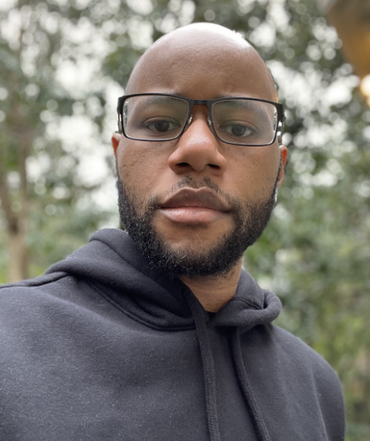
Blavity Inc., a media company focused on Black Millennials and Gen-Z, raised $12 million in venture capital, scaled via a technology stack focused on microservices and now wants to pass on that knowhow to other Black-led startups via Blavity.org.
The Blavity tale, which started in 2014, is one of bootstrapping and stretching resources before venture funding provided a turbo boost. There are a host of technology and business lessons to be had from founders Morgan DeBaun, Jeff Nelson and Aaron Samuels.
I caught up with Chief Technology Officer Nelson to talk technology. Here are the highlights.
Blavity’s mission. Blavity aims to create experiences for a Black audience that transcends digital and physical space. That roughly equates to digital media properties as well as an events business. The company operates a network of sites focused on news, politics, entrepreneurship, entertainment and health to name a few. “Historically what we’ve been able to do is to really allow people to connect online in digital spaces and then have these organic in person interactions,” said Nelson. “Our partners want to be a part of that, so they sponsor our events and support advertising on our media properties as well.”
Blavity Inc. also just launched Blavity.org, a fellowship program to teach Black entrepreneurs how to scale their businesses. At a high level, Blavity.org is looking to increase Black America’s business equity via entrepreneurship.
Bootstrapping a company. Nelson said the company didn’t start out with venture funding. “Venture funding is one of the things that’s really difficult for a company with Black founders led by a woman,” said Nelson. “The first several years we had to be creative.” For instance, early on Blavity had a shop where one of the founder’s moms would knit gear to sell. “She would knit sweaters, beanies and caps and things like that and we’d sell it. We were just finding ways to generate some revenue and allow us to hire additional writers or experiment with different marketing strategies,” explained Nelson.
In 2016, Blavity launched Afro Tech, its flagship conference. Year one was 800 people and now it’s over 10,000. In 2017, Google Ventures led a funding round for Blavity to enable the company to scale more. Nelson said Google Ventures was interested in Blavity’s ability to understand its audience through technology and data. Nelson built his own database system.
Scaling up. The venture funding enabled Blavity to scale in a way that it couldn’t before. “Momentum and passion gets you to a certain point, but then you hit that startup wall,” said Nelson. “And it’s hard to grow and scale after that.” Google Ventures also gave Blavity more credibility. “Quite frankly, additional partners would take meetings because we were backed by Google Ventures,” he said.
Technical debt and microservices. One of the reasons that Blavity.org’s fellowship is focused on scaling knowhow is because it’s difficult. Nelson explained that startups are focused on launching a minimum viable product to get to market. That approach means short cuts and if things are architected correctly you pay for it down the road. “If you’re fortunate you find yourself in this position of ‘oh, now we have 10x, 20x, 100x more users,'” said Nelson. “And we can’t support it.”
Compounding the issue was that Blavity was also acquiring sites. Simply put, you can acquire your way to tech debt quickly (like on day one). Enter microservices.
“Early on I made the decision that we were going to use a microservice architecture and we were going to invest in containerization,” said Nelson. Here’s the catch though: In 2015 and 2016 that bet wasn’t the no brainer it is today. Microservices allowed Blavity to better integrate acquisitions and absorb those acquired tech stacks. “It was incumbent on us early on to build microservices so we could think about common functions in isolation,” said Nelson.
The other microservices theme to note is that Nelson moved to that architecture not only because he wasn’t into monolithic systems, but because microservices are less expensive to run. Microservices makes it easier to fix bugs, code and iterate quickly. “We just had to be much more judicious in our resources, so we had to build our technology in a way that simplified and allowed us to approach each individual piece,” said Nelson.
The role of engineering. Nelson said since Blavity is a media and events company “the engineering team is operating as a supporting function” designed to allow the content team and sales teams deliver. “Our teams are going to be small. I mean we’ve got less than 10 engineers after 7 years,” said Nelson. “But we’ve got a very nimble team.” Nelson added that he has to get the most out of his team without burning anyone out and enabling them to invest in their own personal development and mental health. His team has always been remote.
Blavity.org. The company just launched a non-profit and growth fellowship. The idea is that Blavity can teach Black entrepreneurs how to scale and past the startup wall. Nelson said knowing how to scale is a matter of survival. “We can distill our journey and the things that have given us success as well as the learnings we’ve acquired,” said Nelson. “We can pass that on in a very tangible way.” The fellowship program is 6 months and Blavity.org has launched with 12 fellows across different verticals including media, retail and pre-seed startups. The fellowship will run twice a year and scale to 60 fellows by 2023.
Blavity.org is also providing mentoring and $10,000 in non-diluted capital. “We wanted to figure out a way to inject capital into a Black startup that was going to make a difference, but we wanted owners to keep as much ownership as possible,” said Nelson.
ZDNET’S MONDAY MORNING OPENER
The Monday Morning Opener is our opening salvo for the week in tech. Since we run a global site, this editorial publishes on Monday at 8:00am AEST in Sydney, Australia, which is 6:00pm Eastern Time on Sunday in the US. It is written by a member of ZDNet’s global editorial board, which is comprised of our lead editors across Asia, Australia, Europe, and North America.


